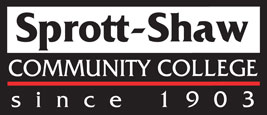 With the ever changing demands of the new economy many people are opting to direct and control their careers through self-employment.
With the ever changing demands of the new economy many people are opting to direct and control their careers through self-employment.
There are a number of benefits to being self-employed. You will:
▪ Have more freedom.
▪ Have more control over your work schedule.
▪ Have the choice to work from home.
▪ Be paid more money for the work.
▪ Be able to take on work from different sources.
Here are 8 things you can do to ease the transition to self-employment:
- Get Into a Business You Love. At the end of each day, you will have invested another 24 precious hours of your life doing whatever it is your business demands of you, and if you’re work life isn’t jammed full of activities you enjoy, you’ll be wondering why the heck you started the business in the first place.
- Surround Yourself with Champions. When you announce your intention to start a business, you’ll find well-meaning friends will discourage you citing notorious business failures and financial shipwrecks. Old party partners will go to great lengths to get you back into the party game. Others, knowing you just scored a business loan or earned a profit, will try to guilt or coerce you into lending them money. To counteract any negativity, establish your own support team. It’s healthy to interact with positive, supportive people.
- Go the Extra Mile. When it comes to starting or growing your business, the “extra mile” can make the difference between success and failure. Business owners are often compelled to do important tasks after the regular workday and beyond the realm of normal energy outputs and expectations. Many great achievements take place over and above the regular workday. There is always enough time for miracles; it’s a matter of identifying the need, developing a plan, and taking action.
- Learn all you can about your business idea. Are there competing businesses already selling products and services you’re considering? Is your idea new to the area? Determine if there is demand for your goods by talking to potential customers and competitors. Answering these questions is part of doing market research and proving your business case.
- Be curious and coachable! It takes a certain confidence in oneself to brave the chaotic waters of starting a business, but overconfidence is the kiss of death. You can’t go wrong by spending more time listening than talking. Listen to competitors, listen to business owners, and listen to customers. Listen to anyone knowledgeable about the industry, and who will take the time to educate you about the business. Find a mentor.
- Set Your Prices High Enough. You’ll never build goodwill by under-charging your customers. Those new to business are prone to undervaluing their products and services. This is one of the common pitfalls made when starting a new business. Be sure to charge enough for your products and services to cover your overhead costs and turn a bit of profit. Decide whether you want to be the cheapest, the fastest, or the best. Pick any two; trying to be all three is a sure recipe for going broke.
- Get It in Writing. When you make the transition to self-employment, don’t be afraid to ask for signed agreements from customers, suppliers and other professionals. A signed agreement will go a long way toward eliminating misunderstandings afterward, and conserve your energy for the most important activity of all for the cheerfully self-employed; serving customers.
- Become the Expert. Do as much yourself as you realistically can, for as long as you can. Most small enterprises become successful because of the owner’s tireless efforts, particularly in the earlier stages. As long as it doesn’t go on to the point of burnout, wearing many hats is an ideal opportunity for the owner to get to know all aspects of the business and become the expert for the business.
Are you ready to join the world of the self-employed? The Fast-Track to Self-Employment BootCamp will be offered at Sprott-Shaw this June at the Prince George, Kelowna, Victoria and Vancouver campuses. 3 Days in class time are followed by 37 hours of self-directed research, 4 teleseminars and an hour of one-on-one coaching. For more information or to register visit http://www.riskbuster.com/fast-track-to-self-employment-bootcamp/ or email info@riskbuster.com today.

 Each participant will get the following workshop materials:
Each participant will get the following workshop materials:



 Most entrepreneurs face the ongoing possibility that they’ll simply work themselves into the ground by trying to do everything themselves. Many small enterprises are directly tied to their owners – which means that the minute the owner stops producing, the cash flow and the business skid to a halt. This is a recipe for burnout.
Most entrepreneurs face the ongoing possibility that they’ll simply work themselves into the ground by trying to do everything themselves. Many small enterprises are directly tied to their owners – which means that the minute the owner stops producing, the cash flow and the business skid to a halt. This is a recipe for burnout.
 With the ever changing demands of the new economy many individuals are opting to direct and control their careers through self-employment.
With the ever changing demands of the new economy many individuals are opting to direct and control their careers through self-employment. This workshop includes:
This workshop includes: